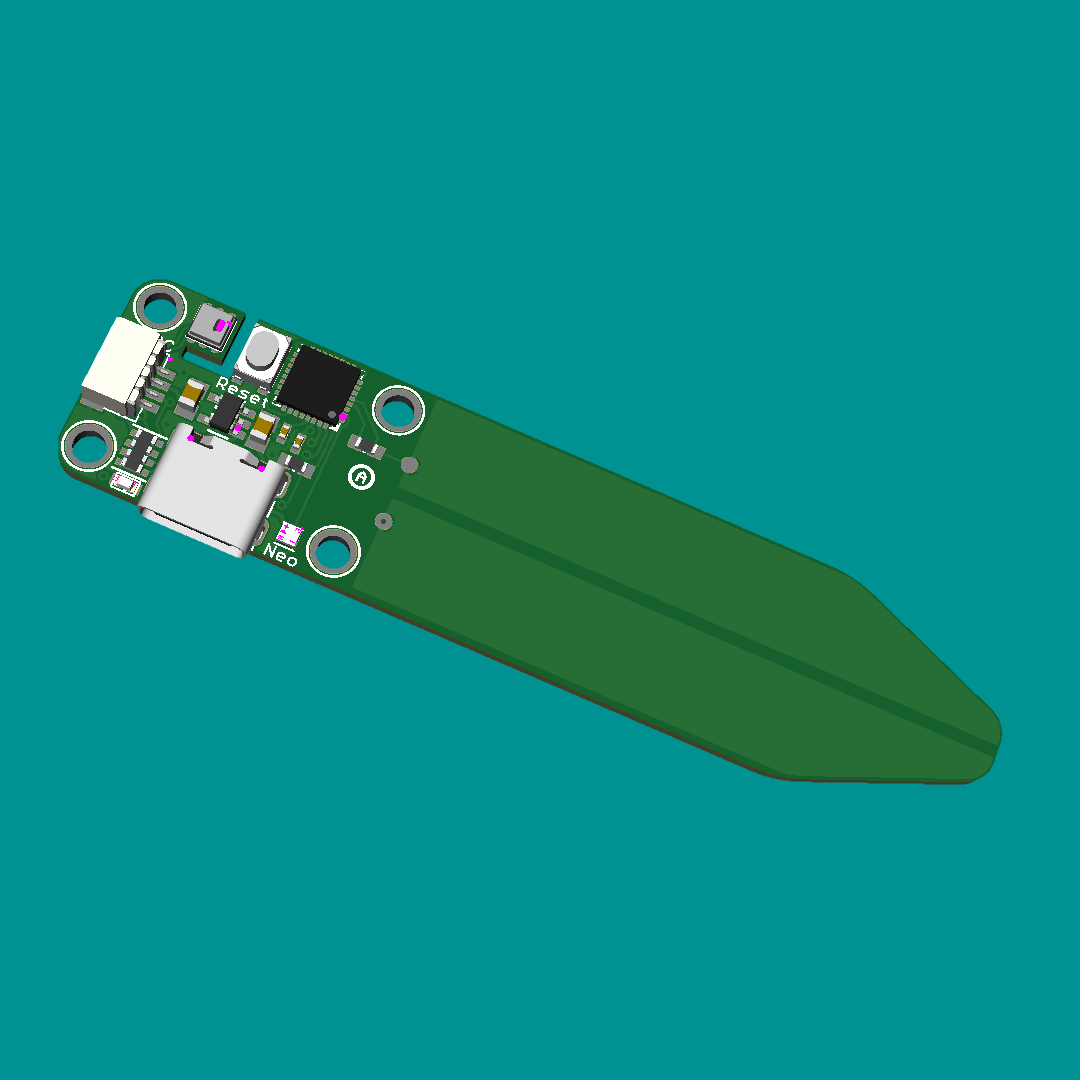Glitch your gift list! Use code gibson15 for 15% off the 2024 Adafruit Holiday Gift Guide! https://www.adafruit.com/explore/holiday-gift-guide-2024
See more posts like this on Tumblr
#gift #hacking #glitchMore you might like
Hacking the Ikea Vindriktning with CircuitPython 🌬️🔬🛠️
The Ikea Vindriktning is a small and affordable air quality monitor that measures PM2.5 particulates for an AQI reading. This project adds a QT Py ESP32-S3 running CircuitPython to read the data from the PM1006 sensor inside the Vindriktning and log the data to Adafruit IO.
My Little Hacker - Hacking the Teddy Ruxpin 🧸 🤖 🔈
Excerpt from ASK an ENGINEER
Glitch your gift list! Use code gibson15 for 15% off the 2024 Adafruit Holiday Gift Guide! https://www.adafruit.com/explore/holiday-gift-guide-2024
Teddy Ruxpin hacking 🧸📚🎶🗣️🤖
shhh! the baby is asleep, which means the parents are up hacking baby toys…we’re following/recreating the DEFCON 26 Teddy Ruxpin reverse-engineering talk by super-hacker team @zenofex and @Exploiteers to bring this now-no-longer-supported Teddy Ruxpin 2017 edition back to life and maybe create some custom content as well!
our first step? parse out the SNXROM file to replace the eye bitmap frames in a ‘story file’ using python and Pillow. we just replaced em all with this adafruit logo but you could use any 128x128 RGB drawings. now that we know that works, next we’ll be poking at the audio32 format to try and decode/encode custom audio. our poking and prodding is over at GitHub
Excellent work and super-clever: Bunnie found a method to see inside some chips, without having to unmount or destroy the chips. Best part - the method only relies on lightly modded off-the-shelf cameras and lenses. Read more at https://bunniestudios.com/blog/?p=6712
EDID EEPROM, HPD (hot-plug detect) pin goes high when connected, and we can generate both 640x480 and 800x480 … more later, this is soooooooooo cool for folks who like to make things with microcontrollers and python ! will post more soon!
Green Thumb Trinkey springs into existence 🌱💧🌞
With recent work to improve our soil moisture sensing, it could be a nice time to design an ‘all-in-one’ board for plant and garden hacking. This board has a USB C, so you can plug it right into your computer and read the capacitance of the soil, as well as the ambient light level and temperature + humidity of the onboard AHT20. A QT sensor and 'standard Stemma QT’ mounting holes mean you can plug in a VOC, CO2, UV, or PM.2 sensor. The SAMD21E18 can run Arduino or CircuitPython, but we’ll also ship it with an example that just spits out CSV data over the serial port for instant interfacing. Coming soon.
IrDA codec board 🔧📡🕰️
We’ve been designing all sorts of IR transmitters and receivers for the Adafruit shop lately, and a chance discussion got us thinking about IrDA - an old wireless protocol used in some PDAs, watches, laptops and toys. its not used anymore - bluetooth LE does a way better job - but there’s probably some cases where IrDA hacking could be useful such as communicating with retro devices or if you want an RF-less wireless link. here’s a board that combines a TFBS4711 transceiver (https://www.digikey.com/short/jn43cz31) with a MCP2112 codec (https://www.digikey.com/short/m8tp3708). you can communicate at 115.2kbps with RX and TX lines just like any UART. 115.2kbps is the standard baudrate. or, provide your own CLK for something like 9600 baud.
Desk of Ladyada - Yaaar it’s a Bus Pyrate!
👩💻 Ladyada and her dedicated team at Adafruit🍇 have been tirelessly working on an innovative hardware project 🛠️, which revolves around the Bus Pirate 🚍🏴☠️. This tool was widely recognized for its role in interfacing with hardware.
The Bus Pirate 🚍🏴☠️ was a USB 🔌 serial device cherished in the hacking 🔓 and hardware interfacing world for its versatility. It gained popularity due to its affordability 💰 and the assortment of protocols it supported, including I2C, SPI, JTAG, among others 🔄.
Sadly, the Bus Pirate 🚍🏴☠️ is no longer in production, potentially a victim of the global chip shortage 🌍🍟.
However, Ladyada didn’t settle for merely recreating the Bus Pirate 🚍🏴☠️ as it was. Instead, she chose to revisit an old project 🔄, a port of the Bus Pirate to CircuitPython 🐍, which had been previously abandoned due to memory constraints on the SAMD21 chip 🧠💾.
The freshly designed hardware aims to be roughly the same size and maintain similar functionality as the original Bus Pirate 🚍🏴☠️, targeting a reasonable price tag of around $20💰.
The new and exciting hardware, dubbed as the “Circuit Pirate” ⚡🏴☠️, is powered by the RP2040 chip 🎛️, a more available and cost-effective alternative to the previously used SAMD21.
The Circuit Pirate ⚡🏴☠️ is currently in its prototyping phase 📝, and it’s expected to undergo multiple revisions 🔄 before reaching its final form.
mini Sparkle Motion prototype - a tiny, fully-featured WLED board ✨🔌📏💡🌈
We’re doing a lot of serious testing with our WLED mega-board, code-name Sparkle Motion .
While doing some holiday lighting projects, we also wanted something slim enough to slip into any design. It still uses an ESP32 for the best support, with USB-serial programming, 5A fuse, 5V level shifting + 100 ohm series resistors for pixel drivers, user/reset buttons, a user LED and onboard neopixel, JST SH analog/digital connector, QT I2C connector, 4 GPIO plus power/ground breakouts, and USB type C power/data input.
However, this version is made simpler and less expensive by dropping the DC jack and USB PD support: it’s only for 5V strips if you want to power them directly (you could still drive 12V or 24V pixels, but you’ll need separate power for them). Instead of a full set of terminal blocks for 3 signals, we only have two outputs, and they have to share the power and ground pins. It could also be used for a single two-pin dotstar LED setup. We kept the built-in I2S mic but dropped the on-board IR sensor - if you want an IR sensor, you’ll be able to plug it into the JST SH port with a simple cable or solder it into the breakout pads.
The trade-off is that it’s much smaller and slimmer, especially when no terminal blocks are soldered in by default: only 1.2" long x 0.785" wide (~1 sq in) x 0.3" thick vs. the original’s 2" x 1.3" (2.6 sq in) x 0.55". To get it that small, we went 4-layer to give us a nice big ground and 5V plane in the middle and double-sided assembly. Coming soon.











